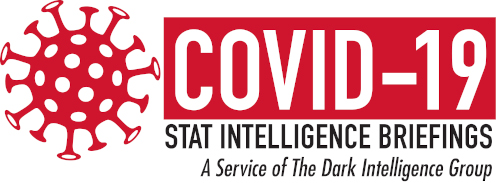Mayo Clinic Laboratories is examining if utilization of SARS-CoV-2 serology testing may be optimized when coupled with PCR testing. The combination of SARS-CoV-2 (COVID-19) serology and PCR testing may create an effective new testing strategy and provide a more complete picture of an individual’s infection status.
As businesses around the country reopen or plan to reopen, there is growing public demand for better understanding of COVID-19 infection risks. This includes risk of spreading the SARS-CoV-2 virus and the risk of an individual developing an infection. It appears that serology testing will play an important role in this understanding. However, there are limitations to the information that serology testing will provide.
The COVID-19 STAT Intelligence Briefings Service reached out to Matthew J. Binnicker, PhD, Director of Clinical Virology at Mayo Clinic, to better understand how Mayo Clinic is approaching increased demand for COVID-19 screening.
“At this point it’s all about mitigating risk. We don’t have a way to truly eliminate risk using the tests that we have,” Binnicker said. While risk cannot be eliminated, the Mayo Clinic has been examining ways to optimize COVID-19 testing options and ensure the best understanding of a person’s risks.
One possible approach that is being considered to optimize COVID-19 testing is to couple PCR and serology testing. “We are considering using both tests in tandem, because we can get more information by using both PCR and serology compared to performing only a single test,” Binnicker said. “One strategy that we’re considering is putting individuals into different risk categories based on the combination of those results.”

For COVID-19 STAT, Dr. Matthew J. Binnicker, Director of Clinical Virology at Mayo Clinic, explained a new COVID-19 lab test utilization strategy being evaluated to develop risk profiles and increase risk awareness. (Photo used with permission.)
Testing in Tandem May Provide Greater Insight into COVID-19 Infection Risk
Using a combined COVID-19 testing approach, multiple scenarios develop different risk profiles.
“If a person is PCR positive and serology negative, it means that there is viral RNA present in their sample, but they haven’t developed antibodies yet. Those individuals would be considered high risk for spreading the disease to others,” Binnicker explained. “If a person is negative by PCR and negative by serology, it probably means they haven’t been exposed to the virus yet, or that they were very recently exposed, and we may need to continue to monitor that person, especially if they develop any symptoms.”
In contrast, “if a person is negative by PCR and positive by serology, it suggests they were exposed to SARS-CoV-2 at some point in the past. They don’t have any virus to be detected by the PCR, but they have developed antibodies,” Binnicker said. We would consider those individuals to be low risk for spreading the virus to others.”
Implications of Coupling PCR and Serology Testing for COVID-19
Binnicker said Mayo Clinic is still evaluating this new approach of COVID-19 testing in tandem (PCR coupled with serology). As a lab test utilization strategy, this could have important implications for clinical laboratories and pathology groups if implemented on a wide scale.
First, there is the potential to increase COVID-19 testing volumes. An effective screening paradigm that creates simple risk profiles would provide valuable data for policymakers and businesses during the reopening process. As this testing strategy requires both serology and PCR, clinical labs would have double the volume compared to solely offering a PCR-based or serology-based screening method.
Testing in tandem may also allow for more efficient use of clinical laboratories’ or pathology groups’ resources. A positive PCR, along with a negative serology result, would indicate that a person is still in the earlier phase of their disease course and represents a higher risk of shedding viral particles and infecting others. In that scenario, repeat PCR testing would likely be unnecessary for at least several weeks. In contrast, serology-positive, PCR-negative individuals may not require repeat testing if they don’t have symptoms, and they could be considered to be in a low-risk category. This helps to prevent unnecessary repeat testing and would allow clinical laboratories to conserve important resources.

—By Caleb Williams, Editor, COVID-19 STAT






